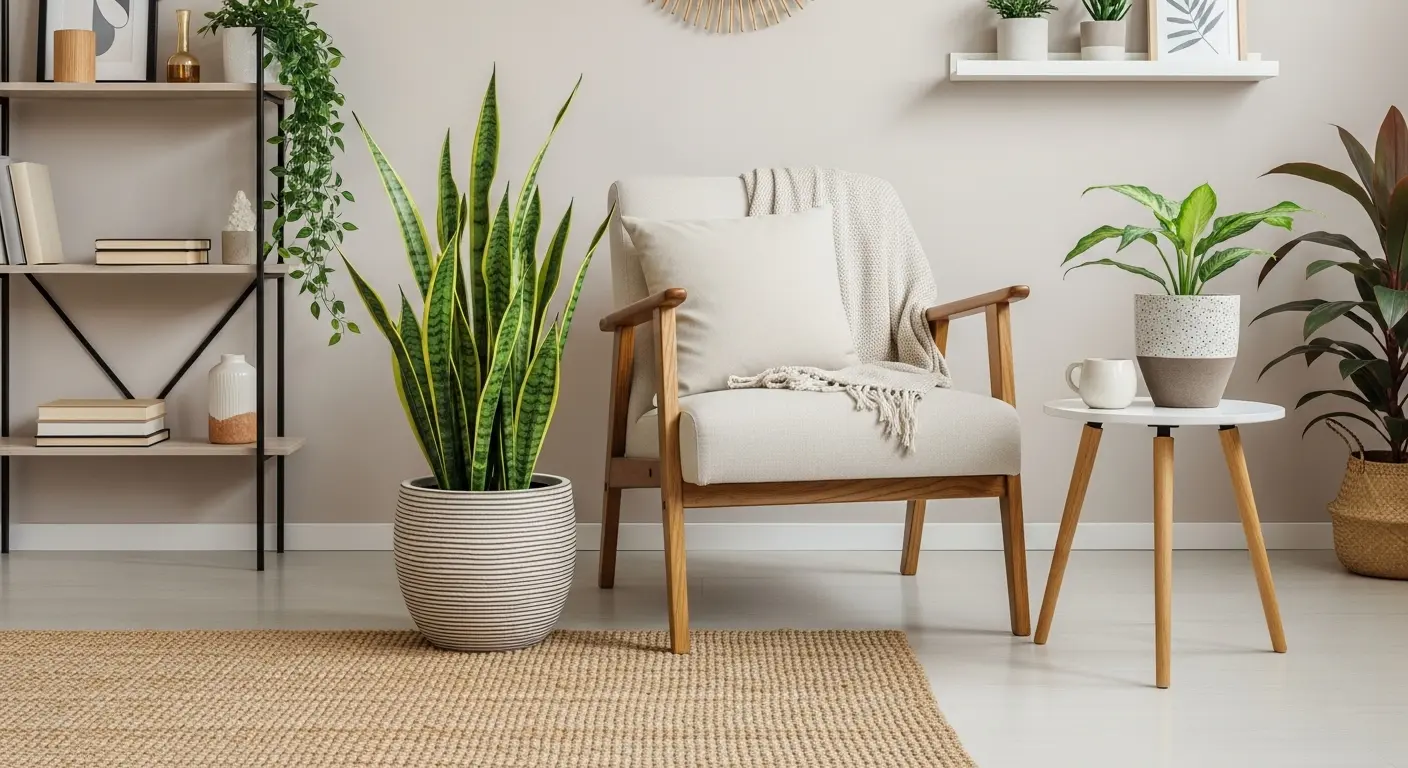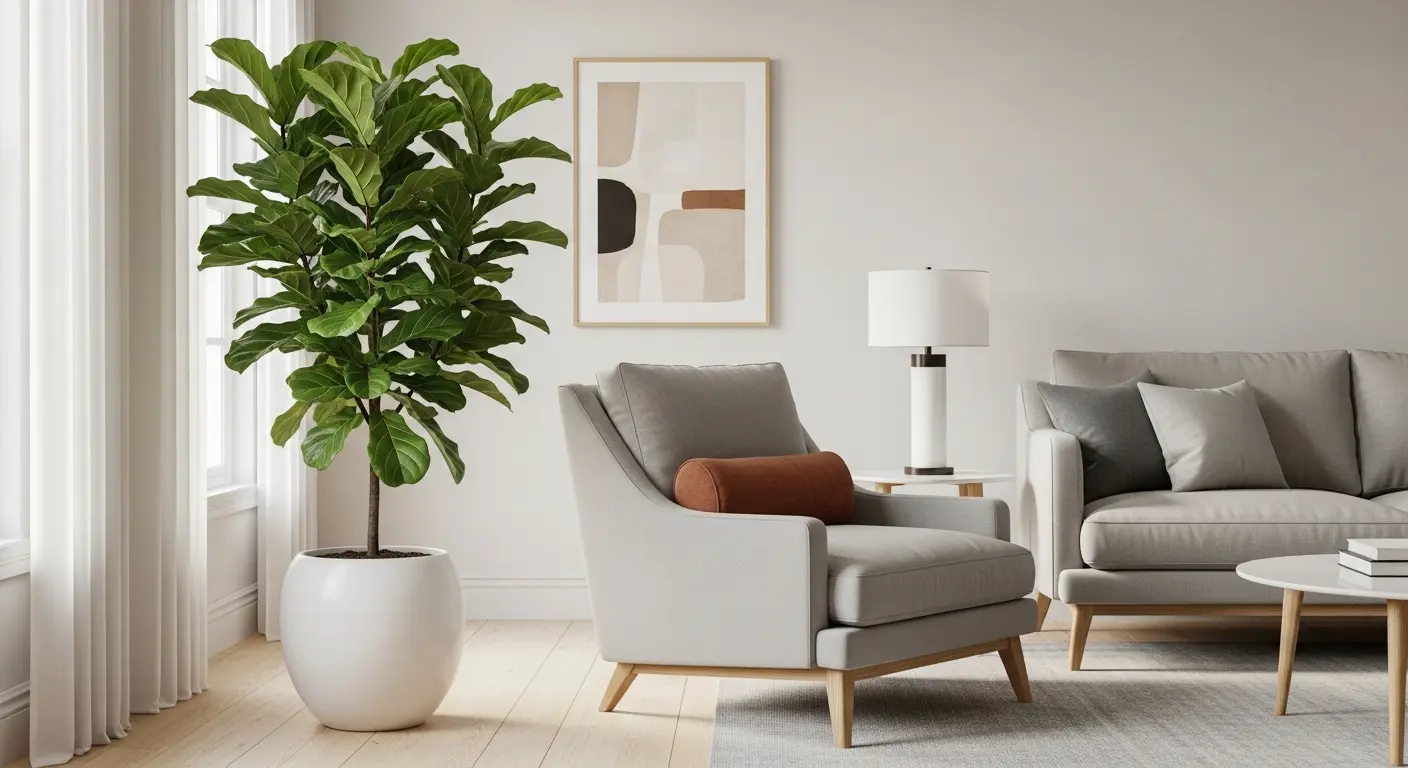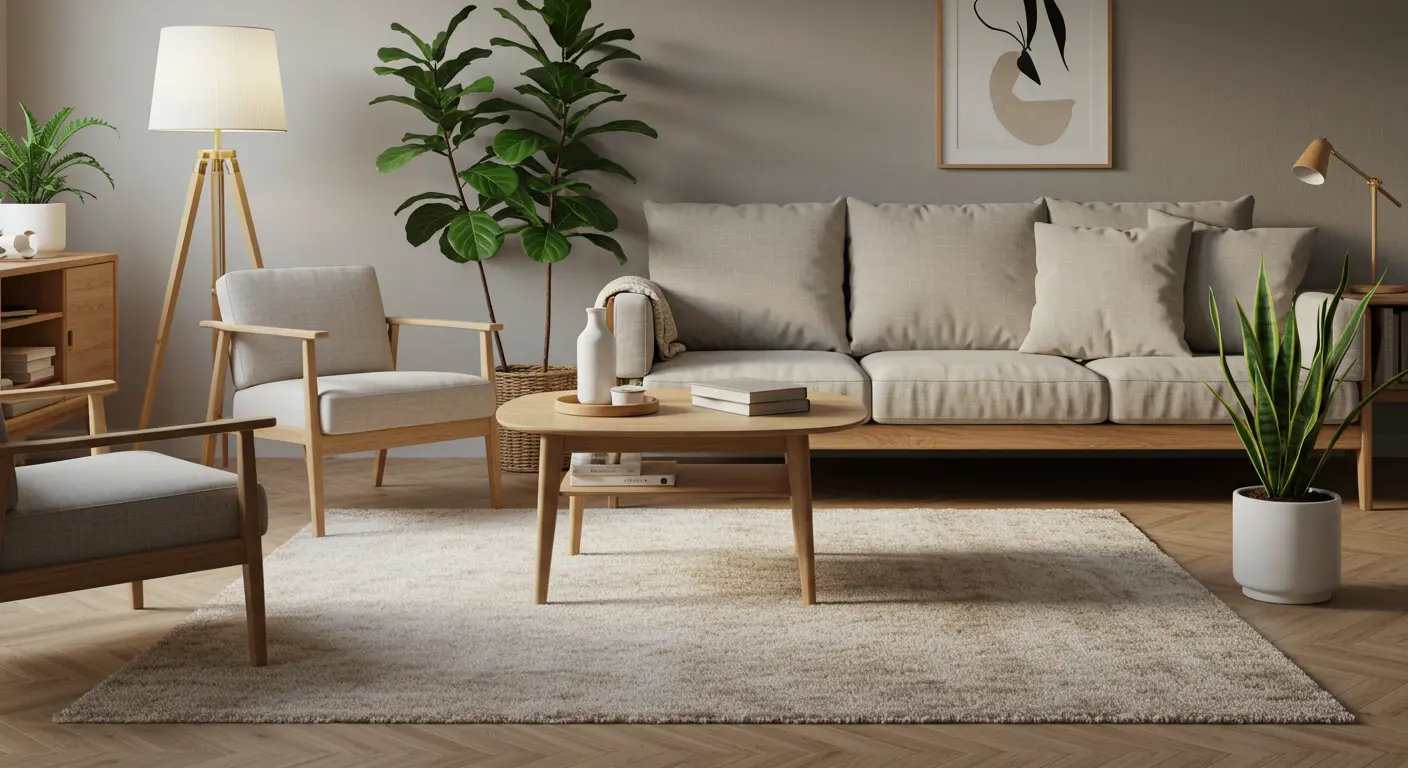
Sustainable Decoration: Minimalism and the Importance of Plants go far beyond aesthetics — they are conscious choices that balance beauty, well-being, and respect for the environment. In times of excessive consumption, bringing greenery indoors is a simple yet transformative gesture. Besides purifying the air, plants create a true connection with nature, promoting harmony and lightness.
In this article, you will discover how to integrate plants in a functional and sustainable way, following the principles of minimalism without compromising your style.
What is Sustainable Decoration and Why Does It Matter?
Sustainable decoration is much more than a trend. It represents a lifestyle that values conscious consumption, the preservation of natural resources, and the creation of environments that respect nature’s cycle. Instead of following disposable fads, the proposal is to invest in durable materials, recyclables, and those with low environmental impact, such as reforestation wood, handmade ceramics, and natural fibers.
Besides reducing the amount of waste and the ecological footprint, this approach encourages the creative reuse of furniture, objects, and even plants, redefining the use of each element.
The role of minimalism in reducing environmental impact
Minimalism and sustainable decoration go hand in hand. By advocating the idea of “less is more,” minimalism invites us to rethink consumption habits, prioritizing quality, functionality, and purpose.
Instead of filling the house with unnecessary objects, the proposal is to create light, airy, and organized spaces, where each item has a reason for being. This choice, besides being aesthetic, is also an ecological attitude: less production, less disposal, less waste.
And in this scenario, plants emerge as protagonists, bringing life, color, and a natural link to environments seeking balance and authenticity.
Plants as Allies of Sustainability
Including plants in decoration goes far beyond an aesthetic touch. They play an essential role in creating healthier, more balanced, and conscious environments. When integrated intentionally, plants become true allies of sustainability, aligned with the philosophy of minimalism.

Environmental benefits: air purification, thermal and acoustic regulation
Compact or larger plants act as natural filters, absorbing pollutants and releasing oxygen, improving air quality in indoor environments.
Additionally, foliage helps to:
- Reduce temperature in hot places, acting as natural thermal insulators.
- Decrease noise and echo, especially in apartments and spaces with hard surfaces.
- Balance air humidity, promoting respiratory health.
These benefits make plants essential in projects that prioritize sustainability and daily well-being.
Natural materials and the appreciation of biodesign
The concept of biodesign values the integration of nature into inhabited spaces, not only through plants but also through materials. Pots made of handmade ceramics, supports made of reforestation or recycled wood, natural fibers like straw and jute, complement the proposal of sustainable decoration.
By replacing plastics and industrialized products with ecological and timeless materials, we reinforce the conscious cycle of decoration.
The importance of consuming less and valuing what is alive
Bringing plants indoors is an invitation to presence and care. Unlike static decorative objects, plants require attention, promote connection, and stimulate a more attentive look at the rhythm of nature.
In minimalism, where the essential is what matters, plants fit in as living elements that:
- Purify and revitalize the environment.
- Connect the resident with natural cycles of growth and transformation.
- Replace the need for multiple decorative objects, keeping the space light and functional.
Green Minimalism: Less is More (and Better)
In the universe of sustainable decoration, green minimalism proposes a clear concept: it is not the quantity of plants that transforms a space, but how you integrate them. Choosing a few well-positioned species can bring life, balance, and connection with nature, without compromising visual lightness.
Avoiding excess: plants as statement pieces
One of the principles of minimalism is to give prominence to the essential. Instead of accumulating pots in every corner, prioritize:
- 1 or 2 sculptural plants that dialogue with the environment.
- Species that create subtle contrast with the color palette.
- Simple compositions, with space for visual breathing room.
Practical example: a fiddle-leaf fig in a ceramic pot next to a neutral armchair can be enough to transform a living room.

Combining neutral colors and foliage for a balanced look
In minimalism, the color palette is fundamental to conveying tranquility and order. Plants should complement this harmony, not compete visually.
Tips:
- Combine dark green or grayish foliage with furniture in off-white, sand, or light wood tones.
- Prefer pots made of natural materials and neutral colors (cement, matte terracotta, recycled wood).
- Avoid mixing species with excessively colorful or variegated leaves.
Example of simple and elegant compositions
To inspire, here are three ways to apply green minimalism:
- Floating shelf with 3 small pots: peperomia, pilea, and mini-fern.
- Light wood niches with a hanging pothos at each end.
- Living room corner with a snake plant in a tall matte ceramic pot.
These compositions respect empty space, create visual balance, and promote connection with nature — all within the minimalist and sustainable aesthetic.
Sustainable Decoration Styles with Plants
Sustainable decoration adapts to different styles, always aiming to create more balanced, conscious environments connected to nature. Plants, when integrated intentionally, are protagonists in compositions that unite aesthetics, well-being, and respect for the environment.
Below, learn about the styles most aligned with the eco-minimalist proposal.
Japandi, Wabi-Sabi, and Scandinavian: simplicity and nature
Styles that value the essence of “less is more”:
- Japandi: a fusion between Scandinavian design and Japanese philosophy. Neutral environments, with plants of simple forms like ZZ plant and rubber plant.
- Wabi-Sabi: celebrates natural imperfection. Plants in handmade ceramic pots, rustic textures, and asymmetrical compositions.
- Scandinavian: focus on natural light, light furniture, and plants that purify the air, such as snake plant and pothos.
In these styles, plants are inserted with balance, respecting empty space and natural materials.

Tropical and Mediterranean style: lightness and freshness with consciousness
Environments that bring the feeling of vacation at home:
- Tropical: plants with lush foliage (like Monstera deliciosa or dwarf banana tree), combined with natural fibers (rattan, straw, jute) and cross ventilation.
- Mediterranean: light colors, earthy tones, and aromatic plants (rosemary, lavender, olive trees in small pots), creating a welcoming and sustainable atmosphere.
Both styles prioritize local materials, reuse, and integration with the region’s climate.
Urban decoration with vertical gardens and indoor herb gardens
For those living in apartments or small spaces, the use of:
- vertical gardens (indoors or on balconies),
- herb gardens in compact supports,
- hanging pots with plants like pothos and spider plant,
allows creating a green refuge without compromising circulation or overwhelming the environment.
Besides decorating, these solutions contribute to improving air quality and stimulate self-care and sustainability practices daily.
Common Mistakes in Sustainable Projects (and how to avoid them)
The quest for sustainable and minimalist decoration with plants can be compromised by misguided choices. The secret is to recognize excesses and focus on simplicity with purpose. Below, see the most frequent mistakes — and how to avoid them consciously.
Using non-ecological materials
Opting for plastic pots, synthetic fabrics, or furniture made from non-certified wood contradicts the sustainable proposal. These choices often involve high environmental impact in production and disposal.
How to avoid: Prioritize natural, recycled, or certified materials. Choose handmade ceramics, reforestation wood, organic cotton, or linen. Small choices make a big difference.
Excessive consumption of plants without planning
Buying plants impulsively, without considering the specific conditions of the environment (light, space, ventilation), can lead to loss of species and unnecessary waste.
How to avoid: Research which plants adapt best to your space. Start with a few species and observe their development. Quality over quantity is key.
Ignoring the origin and production chain
Not knowing where materials come from or how objects were produced can inadvertently support unsustainable practices, such as illegal deforestation or exploitative labor.
How to avoid: Value local artisans, small producers, and brands committed to transparency and socio-environmental responsibility. Ask about the origin of products.
Lack of maintenance and improper disposal
Sustainable decoration also involves caring for what you have and ensuring proper disposal at the end of its life cycle. Letting plants die due to lack of care or discarding objects incorrectly contributes to waste.
How to avoid: Learn about the specific needs of your plants. Repair furniture and objects whenever possible. When discarding, look for appropriate recycling or donation options.
Checklist: Sustainable Decoration with Plants
To help you apply the concepts of sustainable decoration and minimalism with plants, here is a practical checklist:
| Category | Action / Choice | Why it’s Sustainable |
|---|---|---|
| Materials | Prefer natural (wood, ceramic, fibers), recycled, or certified materials. | Reduces environmental impact and values conscious resources. |
| Plants | Choose species adapted to the environment; start with few. | Avoids waste and promotes responsible care. |
| Consumption | Buy less, choose quality and durability; value local artisans. | Reduces waste and supports fair production chains. |
| Maintenance | Care for plants correctly; repair objects instead of discarding. | Extends the life cycle of items and avoids unnecessary disposal. |
| Disposal | Recycle, donate, or compost whenever possible. | Minimizes waste generation and landfill impact. |
| Style | Integrate plants respecting empty space and visual balance. | Creates harmonious environments without excess. |
Use this guide to make more conscious and aligned choices with a sustainable and minimalist lifestyle.
Conclusion: Decorating with Purpose and Connection
Sustainable Decoration: Minimalism and the Importance of Plants offer a path to creating spaces that are not only beautiful but also meaningful. By choosing fewer, better elements, prioritizing natural materials, and bringing living greenery indoors, you transform your home into a refuge of balance, well-being, and respect for the planet.
Remember that sustainability is a continuous journey, made of small daily choices. Start by observing your space, questioning your consumption habits, and integrating nature consciously. Each plant cared for, each recycled material, each choice aligned with purpose contributes to a lighter, more authentic, and truly sustainable lifestyle.
🌿 Ready to deepen your connection with nature at home? Explore How to Create a Minimalist Environment with Natural Elements and discover practical tips for combining textures, plants, and simplicity with elegance.
